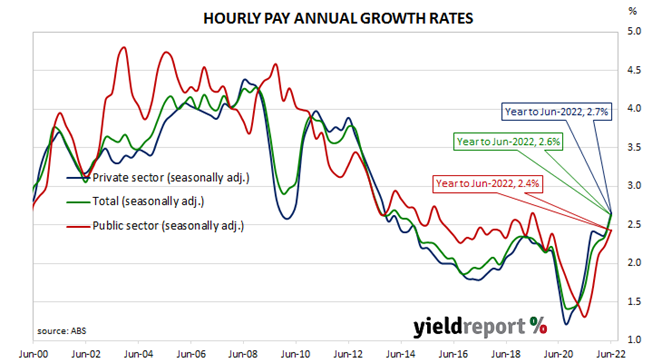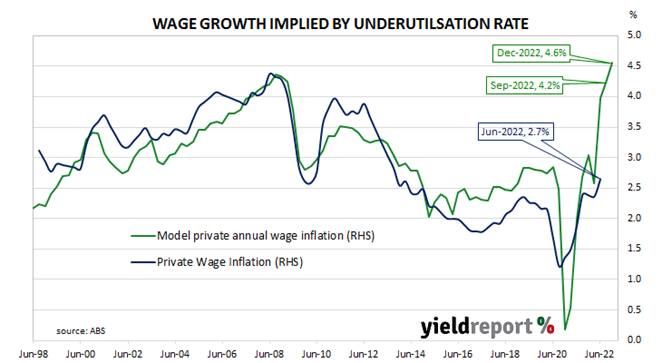Summary: June quarter wages grow by 0.7%, slightly below expectations; annual growth rate speeds up from 2.4% to 2.6%; wage response “quite weak” given underutilisation rate; far from wages breakout; private sector wages up 2.7% over year, public sector up 2.4%; underutilisation rate implies higher wage growth.
After unemployment increased and wage growth slowed during the GFC, a resources investment boom prompted a temporary recovery back to nearly 4% per annum. However, from mid-2013 through to the September quarter of 2016, the pace of wage increases slowed, until mid-2017 when it began to slowly creep upwards. After remaining fairly stable at around 2.2% per annum from September 2018 to March 2020, the growth rate slowed significantly in the June and September quarters of 2020 before speeding up in 2021.
According to the latest Wage Price Index (WPI) figures published by the Australian Bureau of Statistics (ABS), hourly wages grew by 0.7% in the June quarter. The increase was slightly below expectations of a 0.8% rise but in line with the March quarter. On an annual basis, the growth rate sped up from 2.4% to 2.6%.
“The Wage Price Index for Q2 printed in line with our expectations…On this measure, the wage response is still quite weak in the face of the 40-year low in labour underutilisation and record-high difficulty finding labour,” said ANZ senior economist Catherine Birch.
Domestic Treasury bond yields moved higher on the day. By the close of business, the 3-year ACGB yield had gained 5bps to 3.07%, the 10-year yield had added 4bps to 3.29% while the 20-year yield finished 1bp higher at 3.63%.
In the cash futures market, expectations of higher rates eased slightly. At the end of the day, contracts implied the cash rate would rise from the current rate of 1.81% to 2.145% in September and then increase to 2.87% by November. May 2023 contracts implied a 3.52% cash rate, as did August 2023 contracts.
Westpac senior economist Justin Smirk described the latest result as part of “a steady gradual rise in the WPI Index” but noted “it is far from what you would describe as a wages breakout.”
Wages in the private and public sectors grew by 0.7% and 0.6% respectively in the quarter. Over the past 12 months, wages in the private sector increased by 2.7% while public sector wages grew by 2.4%. Annual wage growth in the two sectors had been at 2.4% and 2.2% respectively in the March quarter.
The “underutilisation rate” is simply the sum of the unemployment and underemployment rates as per ABS monthly statistics. It has a good correlation with private wage growth two quarters in the future and thus it is useful as a leading indicator. However, differences can open up from time to time. June’s underutilisation rate suggests private wage growth is likely to continue accelerating.
“The most recent observation on wages suggests they are modestly underperforming compared with the longer run trend relationship with underutilisation,” added Smirk.
Each quarter the ABS surveys around 3,000 private and public enterprises regarding a sample of jobs in each workplace to measure changes in the price of labour across 18,000 jobs. The results are used to construct the Wage Price Index in a manner similar to the construction of the Consumer Price Index (CPI). Changes in the WPI over time provide a measure of changes in wages and salaries, independently of the type or quantity of work.



